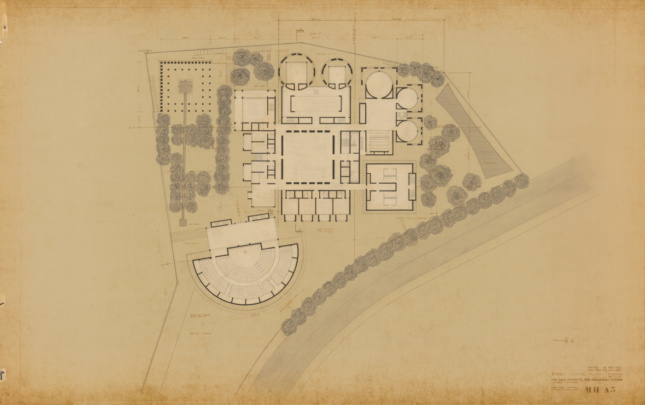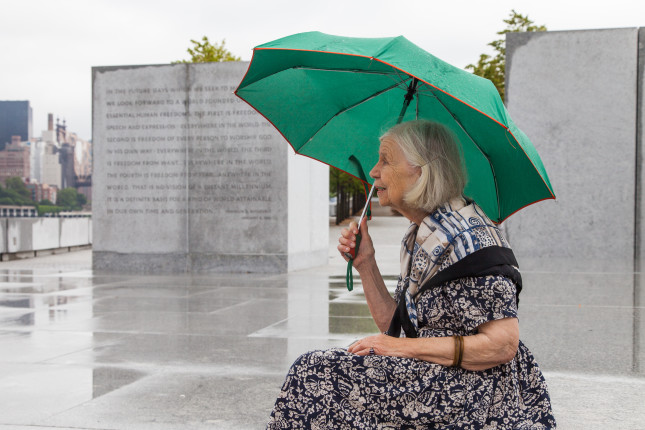The Evolution of a Building Complex: Louis I. Kahn’s Salk Institute for Biological Studies
By Jeffry Kieffer
Artifice
$29.30
In spite of its title, this book is not exactly a reconstruction of the evolution of the Salk Institute from the time of Dr. Salk’s first meeting with Louis Kahn in 1959 to when the first scientists moved into the northernmost laboratory block lining the monumental plaza overlooking the ocean in 1966. This book may be seen as a polemical essay that seeks not only to refute the negative reception of Kahn’s work by established European critics like Colin Rowe, Reyner Banham, and Manfredo Tafuri, but also to challenge the notion that the French Enlightenment strongly influenced Kahn. This idea was hypothesized in the 1980s by a number of Italian scholars, such as Marcello Angrisani, whom I cited in my essay “Louis Kahn and the French Connection,” first published in Oppositions 22 in 1980.
Despite acknowledging the influence of the French émigré architect Paul Cret, who was Kahn’s mentor at the University of Pennsylvania until the latter’s graduation in 1924, Jeffry Kieffer finds it necessary to insist that Kahn’s approach was not typological. This term references the abstract type-forms promulgated by J. N. L. Durand in his 19th-century treatise Précis des leçons d’architecture données á l’Ecole Polytechnique, which was destined to establish the compositional method of the École des Beaux-Arts, by which Cret had been formed. Cret attempted to transmit this thought process to his students, notwithstanding Kahn’s socially committed, anti-academic stance adopted during his collaboration with Oscar Stonorov at the time of the New Deal.

Despite Kahn’s initial commitment to social housing, Kieffer insists that Kahn in his maturity was influenced, like Frank Lloyd Wright, by American transcendentalism, although he fails to observe how this preoccupation was also evident in the work of Buckminster Fuller, who influenced Kahn via Anne Tyng when the two designed the gargantuan, geodesic City Tower project of 1952–57. Further, Kieffer skips over not only the countervailing impact of Kahn’s sojourn at the American Academy in Rome from 1951 to 1952 but also the simultaneous publication on Kahn’s doorstep, as it were, of Emil Kaufmann’s Three Revolutionary Architects: Boullée, Ledoux, and Lequeu, issued by the American Philosophical Society in Philadelphia in 1952.
Surely this work has to be one of the sources for Kahn’s hermeticism, more than Kieffer’s somewhat simplistic suggestion that there’s a link between an open Torah and the symmetrical plan of the Salk Institute, which comprises twin blocks on either side of an axial plaza facing the sea. If any part of Kahn’s Salk Institute proposal is hermetic, then it is surely his unrealized Meeting House complex, which seems to have been conceived by the architect as cryptically overcoming the split between C. P. Snow’s two cultures, i.e., the separate discourses of art and science—which may account for Kahn’s metaphorical treatment of the Meeting House as “a building wrapped in ruins.” Uncertain as to what might be the ultimate program for such a building, Kahn seems to have rung the exterior around its content—part lounge, part dining hall, part library, part theater—with all except this last being housed in orthogonal volumes. Kahn ostensibly modeled the theater, according to Kieffer, after Ledoux’s Besançon theater of 1775, but the theater associated with the Meeting House bears little resemblance to Ledoux’s form. Kieffer is at his best in his formal analysis of the Salk Institute, although even here the rigorous character of his analysis might have been aided by the support of annotated diagrams.
Above all other considerations, Kieffer wants to convince us that Kahn’s constant preoccupation was to render every building as a transcendental light modulator, with light continually changing according to the movement of the sun. At the same time Kahn’s approach was often to assume an a priori geometrical gestalt as a point of departure, as in his 1959 First Unitarian Church in Rochester. His designs were also often inflected both tectonically and programmatically, as is evident from the folded-plate version of his long-span interstitial service floors set between the layered laboratories at Salk, a solution that was eventually abandoned in favor of Vierendeel trusses spanning across the labs. A similar inflection occurs with the Kimbell Art Museum in Fort Worth, Texas, of 1965–72, wherein cycloid pseudo-vaults span 100 feet as folded plates in such a way as to provide for both longitudinal pseudo-rooms and a transverse flexible loft space, thereby reconciling the inherent conflict between a museum conceived as an assembly of rooms and a museum conceived as open-ended space.
Kenneth Frampton is the Ware Professor of Architecture at the Graduate School of Architecture, Planning and Preservation at Columbia University.











